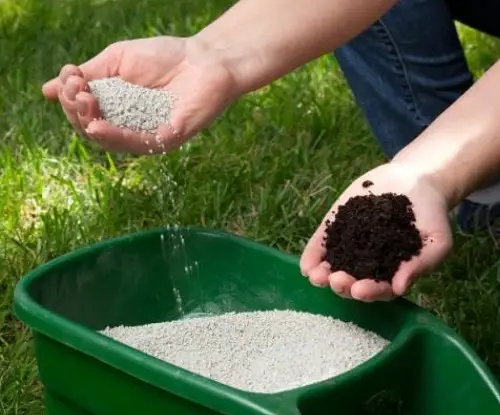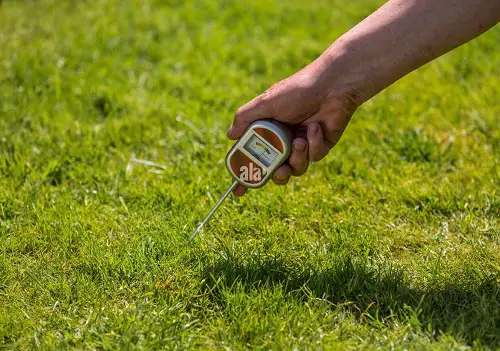Get ready for a greener lawn with the magic of sulfur! Learn How Often Can I Apply Sulfur to My Lawn for a lush and thriving garden!

Want to know the secret to a lush, green, and thriving lawn? It’s Sulfur! Now, we know what you’re thinking. How Often Can I Apply Sulfur to My Lawn? Scroll on; we’ll tell you everything.
Learn Free Plant Tricks to Improve Your Green Thumb here
Benefits of Sulfur Application on Lawn
Why Sulfur? Sulfur’s a unique soil amendment that can help your lawn look its best if you know what you’re doing. Over time, Sulfur buildup in the soil can change the pH range and lead to healthier and greener grass.
It’s pretty simple, actually; if you notice yellow grass blades or weak shoots, it means your lawn is lacking sulfur. Adding it to your lawn care routine will do tons for your grass. It will become lush and green, its density will improve, and the grass will become more resilient against drought and harsh winters.
But that’s not all, sulfur in the soil allows grass to recover from fungal infections fairly quickly. With so many benefits, you should not miss out on it. Plus, you only need to apply sulfur 1-2 times a year in the fall or spring. We’ll help you start.
Check out Super Effective Lawn Care Tips for Lush Green Garden here
Sulfur Application in Lawn + How to Start and How Often to Apply Sulfur

Imagine a lush, green lawn that everyone in your neighborhood envies – that’s what sulfur can do for you. It is not a night’s work and will take some time, but it’s definitely worth it!
1. Testing Your Soil’s pH
Before starting with the sulfur, you’ll need to check your soil pH and nutrients. Make sure that the starting pH is between 6.0 and 7.0 for the best growth.
Learn How to Check Your Soil pH at Home here
2. How Much Sulfur to Apply
How much sulfur you need to add depends on the soil’s texture and pH. For example, 10-15 pounds (4.5 – 6.8 kg) of sulfur is needed for 1,000 square feet to lower the pH of sandy soil from 7.5 to 6.5. On the other hand, soil with a clay consistency will need 20-25 pounds (9 – 11 kg) for this.
Overusing sulfur can burn the grass, so don’t use it all at once!
Just apply up to 5 pounds (2.26 kg) of elemental sulfur per square foot every 3-4 weeks during the cooler months of fall and spring. That’s it.
Note: Don’t apply more than 10 pounds (4.5 kg) per 1,000 square feet per year, as it will damage your soil and overwhelm the grass.
Check out these Amazing Money Saving Gardening Tips
How to Apply Sulfur to My Lawn?

It’s really easy to apply sulfur. All you need to do is spread it on your lawn. You can also mix it into the soil before planting the grass. If your lawn is already full of grass, you can use sulfur plugs to add sulfur to the soil without burning the grass. Just make sure you have your gloves on so your hands are protected.
If your garden’s soil is rich in clay, you should add other soil amendments to make it easier for the grass to grow. Once you’re done, give your lawn a good watering so the sulfur is absorbed into the soil properly.
It’s best to apply sulfur in cool weather to avoid burning your grass. Remember, only apply sulfur to your lawn when the temperature is below 82°F (28°C).


